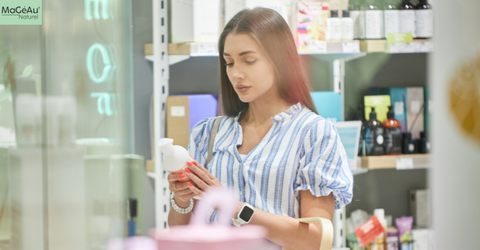When we choose skincare products, we expect them to be safe and effective. But have you ever wondered why some countries ban certain ingredients while others allow them? One of the most surprising differences lies between the European Union (EU) and the United States (US).
The EU bans over 1,300 harmful chemicals in skincare, while the US prohibits only 11. Why such a huge gap? Let’s explore this issue and understand how it impacts consumers like you.
The Real Cost of Unsafe Skincare
Your skin is your body’s largest organ, and it absorbs much of what you apply to it. That’s why the ingredients in your skincare products matter so much. Unfortunately, many popular products in the US contain toxins linked to health issues like allergies, hormonal disruptions, and even cancer. These issues are often brushed under the rug because the US has less stringent regulations compared to the EU.
For example, ingredients like parabens (preservatives), sulphates (cleansing agents), and silicones (smoothing agents) are common in US skincare. They’re cheap to use and give products a luxurious feel, but they can harm your health over time. Parabens mimic hormones, sulphates can irritate your skin, and silicones may clog pores and prevent your skin from breathing. Yet, these ingredients are still widely available in the US market.
Why Does the EU Take a Tougher Stance?
The EU follows the "precautionary principle," which means they ban or restrict ingredients suspected of being harmful until they are proven safe. In contrast, the US often takes a "wait-and-see" approach, allowing potentially harmful ingredients until there’s overwhelming evidence against them.
In Europe, consumer safety comes first. Before a product hits the shelves, companies must prove that it’s safe for people and the environment. The EU regularly updates its list of banned ingredients based on the latest scientific research. This proactive approach protects consumers from harmful chemicals long before their effects become widespread.
The Hidden Toxins in Your Skincare
Most consumers don’t realise how many harmful chemicals lurk in their daily routines. Here are some lesser-known toxins you should watch out for:
- Paraffin: Found in creams and lotions, paraffin is a petroleum-based ingredient. It might make your skin feel soft initially, but it can block pores and lead to irritation over time.
- Synthetic Fragrances: These can contain hundreds of hidden chemicals that may cause allergic reactions or disrupt hormones. In the EU, fragrance components must be clearly listed if they’re known allergens.
- Phthalates: Often used to make products more flexible or help fragrances last longer, phthalates are linked to hormonal imbalances and developmental issues.
- Formaldehyde-Releasing Agents: Common in shampoos and moisturisers, these ingredients slowly release formaldehyde, a known carcinogen.
Why Choose 100% Natural and Cruelty-Free Products?
The best way to protect your skin and health is to opt for products made with 100% natural ingredients. Natural skincare avoids harmful chemicals and relies on plant-based ingredients to nourish your skin. These products are free from paraffin, parabens, sulphates, silicones, and synthetic fragrances.
Cruelty-free products are also better for the planet and align with ethical values. The EU banned animal testing for cosmetics in 2013, making it a global leader in cruelty-free beauty. In contrast, some US companies still test on animals, even though there are alternative methods available.
How to Spot Safe Skincare Products
Navigating labels can be tricky, but here are some tips to help you choose safer skincare:
- Check the Ingredient List: Look for products labelled as free from parabens, sulphates, silicones, and paraffin. If the list includes natural ingredients like aloe vera, magnesium, shea butter, or jojoba oil, that’s a good sign.
- Look for Certifications: In the EU, certifications along with clients’ trust and commitment to sustainability guarantee that a product meets strict safety and environmental standards. In the US, you can look for cruelty-free logos or USDA organic certification.
- Avoid Synthetic Fragrances: Choose products labelled “fragrance-free” or those that use natural essential oils for scent.
- Research the Brand: Brands like MaGéAu Naturel that prioritise consumer health and the environment often share detailed information about their ingredients and manufacturing processes. Transparency is key.
The Benefits of Going Clean
Switching to clean, natural skincare can transform your skin’s health. By eliminating harsh chemicals, you’re less likely to experience irritation, breakouts, or allergic reactions. Plus, natural ingredients are rich in vitamins, antioxidants, and essential fatty acids that nourish your skin from within.
Choosing clean products also supports a more sustainable and ethical beauty industry. It’s a win for your skin, your health, and the planet.
The Future of Skincare
As consumers become more aware of the toxins in skincare, the demand for natural, cruelty-free, and safe products is growing. The EU’s approach to banning harmful chemicals sets a strong example for other countries, including the US. By advocating for stricter regulations and choosing safer products, we can push the beauty industry towards a cleaner, healthier future.
Remember, your skin deserves the best. By staying informed and making conscious choices, you can protect your health and look your best without compromising your values.





Comments (0)
There are no comments for this article. Be the first one to leave a message!